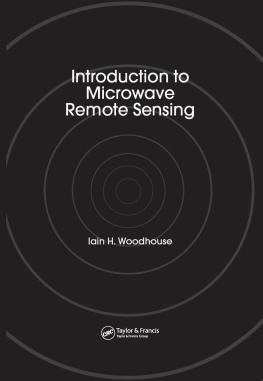The MIT Press Essential Knowledge Series
Auctions, Timothy P. Hubbard and Harry J. Paarsch
The Book, Amaranth Borsuk
Cloud Computing, Nayan Ruparelia
Computing: A Concise History, Paul E. Ceruzzi
The Conscious Mind, Zoltan L. Torey
Crowdsourcing, Daren C. Brabham
Data Science, John D. Kelleher and Brendan Tierney
Free Will, Mark Balaguer
The Future, Nick Montfort
Haptics, Lynette A. Jones
Information and Society, Michael Buckland
Information and the Modern Corporation, James W. Cortada
Intellectual Property Strategy, John Palfrey
The Internet of Things, Samuel Greengard
Machine Learning: The New AI, Ethem Alpaydin
Machine Translation, Thierry Poibeau
Memes in Digital Culture, Limor Shifman
Metadata, Jeffrey Pomerantz
The MindBody Problem, Jonathan Westphal
MOOCs, Jonathan Haber
Neuroplasticity, Moheb Costandi
Open Access, Peter Suber
Paradox, Margaret Cuonzo
Post-Truth, Lee McIntyre
Robots, John Jordan
Self-Tracking, Gina Neff and Dawn Nafus
Sustainability, Kent E. Portney
Synesthesia, Richard E. Cytowic
The Technological Singularity, Murray Shanahan
Understanding Beliefs, Nils J. Nilsson
Waves, Frederic Raichlen
Haptics
Lynette A. Jones
The MIT Press
Cambridge, Massachusetts
London, England
2018 Massachusetts Institute of Technology
All rights reserved. No part of this book may be reproduced in any form by any electronic or mechanical means (including photocopying, recording, or information storage and retrieval) without permission in writing from the publisher.
This book was set in Chaparral Pro by Toppan Best-set Premedia Limited. Printed and bound in the United States of America.
Library of Congress Cataloging-in-Publication Data
Names: Jones, Lynette A., author.
Title: Haptics / Lynette A. Jones.
Description: Cambridge, MA : The MIT Press, 2018. | Series: The MIT Press essential knowledge series | Includes bibliographical references and index.
Identifiers: LCCN 2018005636 | ISBN 9780262535809 (pbk. : alk. paper)
eISBN 9780262349055
Subjects: LCSH: Touch. | Touch--Physiological aspects. | Senses and sensation.
Classification: LCC QP451 .J66 2018 | DDC 612.8/8--dc23 LC record available at https://lccn.loc.gov/2018005636
ePub Version 1.0
Table of Contents
List of tables
List of figures
Guide
Series Foreword
The MIT Press Essential Knowledge series offers accessible, concise, beautifully produced pocket-size books on topics of current interest. Written by leading thinkers, the books in this series deliver expert overviews of subjects that range from the cultural and the historical to the scientific and the technical.
In todays era of instant information gratification, we have ready access to opinions, rationalizations, and superficial descriptions. Much harder to come by is the foundational knowledge that informs a principled understanding of the world. Essential Knowledge books fill that need. Synthesizing specialized subject matter for nonspecialists and engaging critical topics through fundamentals, each of these compact volumes offers readers a point of access to complex ideas.
Bruce Tidor
Professor of Biological Engineering and Computer Science
Massachusetts Institute of Technology
How We Perceive the World via Touch
When we move our fingertips across a table or along a piece of fabric we are immediately able to sense whether it is smooth or rough, and even in the absence of vision we can probably determine what the table or cloth is made from. We can also recognize familiar objects quickly and very accurately using touch alone. This ability to identify and perceive the properties of objects relies on our sense of touch and more specifically on active touch, which is often referred to as haptics or haptic sensing. The word haptics has its origin in the Greek word haptiks, meaning able to grasp or perceive.
Haptic sensing is critical to our experience of the world, from providing us with information that enables us to use just the right amount of force to lift a glass of water from a table, to finding the light switch on the bedroom wall in the dark. In both these situations, there is ongoing feedback from sensory receptors in the skin and muscles so that we can immediately make an adjustment if we notice that the glass is slipping between our fingers, or that our hand has not located the light switch after scanning the surface of the wall. In the absence of this feedback, we are clumsy and rely excessively on vision to guide our hand movements. We are usually unaware of how essential active touch or haptics is to our daily experience until something limits or interferes with the way we perform a task. When our hands are numb due to cold or very sweaty in hot weather, we are forced to be much more cautious when we handle objects or perform an action, because the sensory signals coming from the hand are different from those we normally experience.
Although everyone is familiar with the sense of touch, the word haptics is less frequently used and so is unfamiliar to many people. It involves two senses, touch and kinesthesia, the latter referring to the sense of limb position and movement. Because we primarily use our hands to explore the world tactually, haptic sensing is intimately related to the function of the hands and how we use them. Unlike the visual system, where information such as the color and shape of an object is available with minimal effort, to acquire haptic information we must move our fingers across an objects surface to perceive its texture or poke at it with our fingers to determine if it is hard or soft. Much of the early scientific research on the sense of touch did not focus on active haptic exploration, but simply presented a force or vibration on the skin of a passive observer, who was required to report what was felt.
The aim of this book is to provide an overview of the many aspects of active touch sensing, from the sensors in our skin and muscles that enable us to perceive the world, to the specialization of the haptic sense for processing information about the material properties of objects. Such information is essential to developing robotic and prosthetic hands that attempt to mimic the properties of human hands. We also consider how the sense of touch can be used to compensate for the loss of function in other sensory modalities, like vision and audition. The book will also explore the nature of new technologies that are being developed to create tactile surfaces on the flat screen displays that are so pervasive in consumer electronic devices.
The focus of the first chapter is on understanding the building blocks of the tactile system, namely, the sensory receptors in skin that signal contact with an object and the overall structure of the skin itself. By understanding the properties of these receptors and the skin, we can appreciate how information is processed at this interface with the external world.
Introduction
Haptics involves integrating information from two senses: touch and kinesthesia. The tactile cues arise from stimulation of sensors in the skin known as mechanoreceptors. Kinesthetic information comes from the sensors in muscles, tendons, and joints that signal the position and movement of our limbs, and the forces generated by muscles. The term kinesthesia
Next page







